The Three Treasures: Unity, Harmony, Diversity
Excerpted from The Healing Promise of Qi, McGraw-Hill,
Dr Roger Jahnke, OMD
Join our Free Membership Library for more inspiration – http://IIQTC.org/member
Dao gives birth to the boundless, eternal One — Wuji (Wu Chi),
The Two emerges creatively from the One — Tai Chi (Taiji),
The Three arises dynamically from the Two — San Bao — Three Treasures,
These Three Treasures give birth to all beings and things in the apparent World.
. — Laozi, Dao De Jing, #42
 There are Three Treasures – the One, the Two and the Three – they are a kind of map of the world. The Three Treasures – San Bao – are the veritable basis of Chinese medicine and Chinese philosophy – and the essence of the cultivation of Qi and virtue. There is dynamic debate over millennia as to the most profound systems of theory for Qigong (Qi cultivation), Dao Yin (guiding and conducting Qi) and Yang Sheng (nourishing life and Qi). The Three is the gate – like a portal — between the abstract domains of Wuji and Taiji and the known world of four directions, five phases (Wu Xing) and the eight essential symbols (Ba Gua). As such, the Three Treasures Paradigm – San Bao — is the foundation of the mission, most revered theories and the core curriculum of the Institute of Integral Qigong and Tai Chi (IIQTC).
There are Three Treasures – the One, the Two and the Three – they are a kind of map of the world. The Three Treasures – San Bao – are the veritable basis of Chinese medicine and Chinese philosophy – and the essence of the cultivation of Qi and virtue. There is dynamic debate over millennia as to the most profound systems of theory for Qigong (Qi cultivation), Dao Yin (guiding and conducting Qi) and Yang Sheng (nourishing life and Qi). The Three is the gate – like a portal — between the abstract domains of Wuji and Taiji and the known world of four directions, five phases (Wu Xing) and the eight essential symbols (Ba Gua). As such, the Three Treasures Paradigm – San Bao — is the foundation of the mission, most revered theories and the core curriculum of the Institute of Integral Qigong and Tai Chi (IIQTC).
The One – Wuji — as noted by Lao Zi in the Dao De Jing, is the ineffable primordial Dao-Unity from which all originates and arises, to which all returns. The ONE is that non-dual pervasive essence that is never not present – though unseen. Wuji is likely the infinite and indeterminate field of all possibilities referenced in contemporary physics.
The Two – Taiji – is that which arises at the Big Bang (“let there be light”), when Wuji separated to form Yin-Yang – particle-wave, substance-space, dark-light. Taiji, too, is relatively ineffable and may be associated with the nearly infinite field of probability in physics. The wave like nature of that which is probable is, according to Quantum Physics, collapsed into the particular (the particle, the actual) by consciousness.
The Three – San Bao – arises dynamically from Taiji. San Bao is inclusive of our – the humans — most compelling quality, biology — life. The three defines the world as we know it. It is not completely ineffable. If we reference the Three as Body–Mind-Spirit, Jing-Qi-Shen or Earth-Life-Heaven, we can find ourselves in it. While Wuji and Taiji reflect cosmic realms, San Bao includes our local geology, our physical bodies and the energy of emotions and weather. San Bao is a perspective on the totality which we inhabit. Understanding San Bao, therefore, creates a natural portal to Taiji and Wuji. The San Bao as a foundation for Qigong and a practical gateway to the profound.
We will be exploring the traditional Chinese view of San Bao as it applies to the cultivation of Qi and virtue. It is interesting to note, before we proceed, that the autonomic nervous system has three states – sympathetic, parasympathetic and the balance of the two – homeostasis. In terms of pH there are three states (for human fluids – generally) – acid below (6.5), alkaline (above 6.5) and the balance of the two (at 6.5). This is kind of like Yin and Yang with the balance in between being Taiji.
We will discuss this more thoroughly in Part Two of this article, for now the Three we will explore the most essential treasures of the Chinese view from the perspective of the One, the Two and the Three. Having defined the territory in Par T One, we will then explore the territory of San Bao further in Part Two.
The One — Wuji
Supreme Truth Unity, The Dao, Non – Dual
Multitudes of Dragons and Tigers guard the One.
The One is eternally secure.
Spontaneous, the One never ceases.
Preserve the One, guard Truth
and you communicate with the whole Universe.
The One is not hard to know,
the difficulty is persistence.
Guard the One with no distraction
and you are eternally vital.
— Master Ge, Hong – The Master Who Embraces Simplicity
If health means wholeness, then what is our wholeness? Certainly, functional coherence, which implies inner accord, coordination and harmony of our multidimensional being, is one way to describe health which points to wholeness. So, what is the best model for wholeness and coherence? The ancient Chinese felt sure that the best model was nature. The foundations of philosophy as well as the practical applications of Chinese medicine and Qigong are firmly rooted in this principle. The ultimate picture of wholeness is the coordinated, interactive unitary nature of the Universe – the One Supreme Unity (Tai Yi). As a prime example of this, a fundamental Qi cultivation method for health improvement and the creation of inner harmony and wholeness is called the Small Heaven Method (Xiao Tian). This practice is based on harmonizing the small heaven of yourself with the larger heaven of the universe and Dao — the One.
Few realize that the word Universe, used so often to describe everything everywhere, means one song or one tone. Long before written history the Chinese embraced the idea that all of nature is One and that we can bring ourselves to health and wholeness by emulating the One. When the very early Chinese explored the One they associated it not so much with a thing, but instead with a universal process of constant transformation. Somehow they knew that the universe or the cosmos was essentially not a thing but an evolutionary phenomenon. They called this whole, singular, unitary process Dao which translates as “Way” or the “ultimate Way that things work”.
In Qigong your practice, whether it is driven by the commitment to healing disease, empowered living or spiritual peace, the value of the One is supreme. When you become aware that everything — all things, events, concepts and beings — are connected into one, unitary process it is easier to relax and trust. When all the complexity of life — good and bad news, good and bad days, opportunities and challenges — is perceived as an expression of the One, it is easier to feel safe, relax and stay clear in your practice. When you relax the Qi is unrestrained . When the Qi is unrestrained it can flow/function freely, internal coherence and harmony result. This inner harmony causes the healing of disease, increased stamina for productivity and creative access to spirit.
Guarding the One
The most advanced levels of Qigong are based on a sincere and consistent association with the One. At the level of the One you are — and all is — perfect. There is nothing to do to make this happen, it is already done and the One is already operating at 100%. Each of us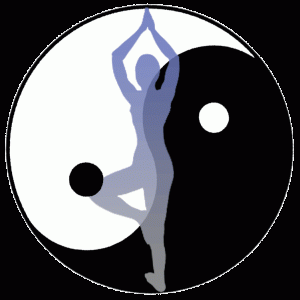 is completely perfect in our wholeness which already exists. The practice in this approach to Qigong, when you are able to engage it, is to allow that which already is to be uncovered, liberated. This has been referred to as the revealing of or the realization of “imprisoned splendor”. In the Qigong context it is the revealing of the splendor of the One within.
is completely perfect in our wholeness which already exists. The practice in this approach to Qigong, when you are able to engage it, is to allow that which already is to be uncovered, liberated. This has been referred to as the revealing of or the realization of “imprisoned splendor”. In the Qigong context it is the revealing of the splendor of the One within.
In the beginning of your Qigong practice it seems impossible that inner perfection of the One is attainable and so you will most likely use cultivation practices that gather and circulate Qi for healing and empowerment. Later, in more advanced Qigong you will learn “to be”. This means to reveal and realize (make real – Zhen) the true self that is already there – to radiate the One from within.
Merging with the One, on a moment to moment basis, is actually the easiest and most direct path to Qigong’s most desired benefits. As the great Qi Master Ge, Hong teaches — “The One is not hard to know but persistence is the difficulty.” This is why there is Natural Flow Qigong – Spontaneous Qigong. It requires very little exploration of form or detail. Thre is nothing to learn or remember. Natural Flow is completely spontaneous and arises naturally, as a way of being, when you vigilantly sustain a direct relationship with the One.
One of the most ancient and respected forms of Qigong is known as Guarding the One (Shou Yi). According to the Book on Precepts, “The Consistent practice of Guarding the One for a long time will bring about a state where the Qi of the One inundates the whole body. As your body and spirit are deeply pervaded by the universe, you will radiate light and undergo transformations without end. This is the benefit of knowing how to properly Guard the One.” Guarding the One has a very rich history through out many dynasties in China. It is a practice that promises healing at all levels of the body, mind and spirit.
It is suggested by the ancients that guarding or attending to the One is a continuous practice. “During all of your activities, in the midst of the thousands of affairs, you must always attend to the One,” says the Scripture of Divine Nature. “While eating or drinking, attend to the One! When happy, attend to the One! When anguished, attend to the One! When sick, attend to the One! Whether passing through water or fire, always attend to the One! Especially when you are agitated, attend to the One!” This is exactly Natural Flow Qigong.
Guarding the One is almost always a deep form of meditation. However, it is typical for the deep state to follow on a set of preliminary practices. In the The Method of Extending One’s Years and Increasing Knowing there is a method called “Order Oneself and Guard the One” which includes massage so that the body feels warm and begins to glow, breathing exercises, swallowing of saliva and clicking the teeth with the chanting of invocations. This is followed by the Guarding the One meditation. Body enhancement and health enhancement are always associated with transcendental practices in the Chinese Qi cultivation tradition.
Of the One , the Two and the Three, the One is Primal Origin, the Source — everything comes from it, is contained within it and returns to it. In Qigong and the process of enrichening and empowering one’s life it is ultimately necessary to enter into direct association with the coherence of One – ness, attaining the non-dual. However, it is not necessary to understand the One, it can not be named or known, it is mysterious and incomprehensible. In the more advanced phases of Qi cultivation the ultimate ideal is to merge with the One — to become the One. Probably the most interesting and comprehensive writing on the One in the contemporary era is an essay by Livia Kohn called “Guarding the One” in Taoist Meditation and Longevity Techniques.
She writes, “Any guarding, embracing, or realizing of the One as original purity will bring about oneness with the primordial or with the harmony of the universe. Any realizing of the One allows the realizing subject to become what he or she was originally meant to become, to fulfill his or her proper destiny in the cosmos. The true nature of human beings is to be healthy and long lived, to participate willingly in the changes of the world. Practitioners of guar ding the One should become incomparably richer in primordial harmony and they should become healthier and increase their life spans, if not become as immortal as the One itself.”
The Two – Taiji
Yin-Yang — Secret of Balance and Harmony
The method of the Golden Elixir
Concerns one Yin
and one Yang,
and that really is all!
The Secret of Life Everlasting
(Can Tong Qi – The Three in One)
 In addition to Qi, there is another important concept from the Chinese tradition that just doesn’t translate into English. Though the words “Yin” and “Yang” are often spoken outside of China, they are rarely translated. Because the meanings of these words are so unique and filled with implication in Chinese culture, and so unfamiliar to the European culture, they cannot be reasonably translated. Yet, these words are very key to our understanding of Qigong, Tai Chi and Chinese medicine.
In addition to Qi, there is another important concept from the Chinese tradition that just doesn’t translate into English. Though the words “Yin” and “Yang” are often spoken outside of China, they are rarely translated. Because the meanings of these words are so unique and filled with implication in Chinese culture, and so unfamiliar to the European culture, they cannot be reasonably translated. Yet, these words are very key to our understanding of Qigong, Tai Chi and Chinese medicine.
The concept of Yin -Yang has vast implications. These words are representative of an immense and highly descriptive domain which is directly applicable to Qigong. Like Qi, Yin – Yang is representative of an entire world view. Yin – Yang is the foundation of an essential Chinese theory of how the world was created and how it works. It goes a long way toward describing how the One — Dao – operates and is used to create descriptions of the state of the Qi. In Chinese medicine, the Yin – Yang theory remains the highly respected foundation of Asia systems of philosophy and medicine, thousands of years after its origination.
Yin – Yang contains secrets. In Qigong it is not so very important to actually understand Yin –Yang with all its subtle and far reaching implications. These secrets are inherent in the practice. They will reveal their meaning to you over time. Here, we will do just a brief exploration, enough to inspire you and give a few impressions that you can carry with you into your practice. Your awakening to these ideas through your experience of Qigong and Tai Chi will potentially become keys to deeper secrets. Embodying and experiencing Yin – Yang through your practice can trigger revelation and cause you to evolve. The applications of Yin – Yang are diverse and will emerge in your relationships, your work, your quest for health and your ability to make decisions based on a growing, insightful sense of the deep and subtle workings of the world.
Zhu Hui, one of my favorite teachers in China, a medical doctor and master teacher of Qigong from Tian Tai Mountain, explained it like this, “First, allow Yin – Yang to capture your attention, then just notice how some simple Yin – Yang aspects show up in the world — like moon – sun, dark – light and hard – soft. Soon, they will begin to communicate with you. Inherent in the Yin-Yang concept are balance and harmony, which are major keys to our success in Qigong and life. In health we are neither too cold nor too hot, we are neither too asleep nor too awake. Soon, you will find Yin and Yang everywhere — together. Seeing the Sun (Yang) we remember the moon (Yin). Feeling cold (Yin) we remember ways to seek warmth (Yang). The importance of rest and restoration (Yin) is implied in every activity and energy expense (Yang). The balance and harmony of Yin – Yang is a primary secret of understanding the function of the natural world, human events and the health of the human being. Think of your world without the balance of work and play, activity and rest, silence and sound. It is easy to see how meaningful Yin -Yang could become in your life. As you pursue Qigong the teachings of Yin-Yang will spontaneously be revealed to you.”
Simply stated Yin and Yang are opposites. In temperature they are cool and warm or cold and hot. In texture they are smooth and rough. In density they are soft and hard. In their original form as Chinese characters Yin describes the shaded side of a mountain – the north, Yang represents the slope that gets full sun – the south. Together they make the whole — the whole of mountain, the whole of temperature, the whole of brightness and shade. From practical features — temperature, texture, density, Yin – Yang graduates toward the realms of the profound. Yin is mystery – hidden, Yang is revelation – revealed. Yin is absorption, Yang is radiance. Yin is gravity, Yang is levity. As you can see, Yin – Yang cannot be translated into English and yet its place in our quest for power and understanding is enormous.
As is written in the 13th century Daoist classic, the Book of Balance and Harmony from Master Li, “If one can be balanced and harmonious within oneself, one is clear and aware — awake in quietude, accurate in action; thus one can respond to the endless changes in the world.” The state of health and optimal function is based on balance and harmony of Yin and Yang. When one is neither too hot nor too cold one is comfortable – balanced. When one is neither too sad nor too happy the nervous system experiences well being. Science calls this homeostasis, the Chinese call it balance. When one is neither too hungry or too full of food, one is nourished and energetic — balanced. These expressions of balance are necessary for harmony. Using knowledge of Yin – Yang you can enhance your wellbeing and your potential.
Even the fundamental essence of the universe and yourself — the Qi — has a Yin aspect and a Yang aspect. In fact, the channels that carry the Qi of Heaven into the body are called the Great Yang Channels (Tai Yang). The channels that carry the Yin of the Earth into the body are called the Great Yin Channels (Tai Yin). The body’s organs are also considered to be Yin or Yang. When Yin and Yang are in balance, health is prevalent. The essence of acupuncture, herbal medicine and massage, as well as Qigong, is based on recovering and sustaining the state of balance and harmony in the Yin – Yang realm. Together, all that is Yin combined with all that is Yang appear as two balanced aspects — of the One — in the Chinese culture’s most famous icon — the Yin – Yang symbol (Tai Chi Tu, Taiji Tu).
The Yin – Yang symbol represents Yin and Yang and their constant interactivity. Seeing this symbol brings the entire philosophy and science of Yin – Yang to mind. This symbol is the best translation of Yin and Yang, it tells the whole story of the universe in one image. It appears on the national flag of South Korea and it has been used by many organizations, particularly in Chinese medicine and Qigong, as a logo. The famous physicist Neils Bohr adopted the Yin – Yang symbol in his personal logo — to represent his theory of the universe. The state of balance in the Yin – Yang symbol, reflecting harmony where the black and the white components are exactly equal, is called Tai Chi (Tai Ji).
You already know that Tai Chi is one particularly famous kind of Qigong. In fact, Tai Chi is not is not just a popular exercise in China. Tai Chi is actually the name of the Yin – Yang symbol. Tai Chi means Universal Harmony also Supreme Ultimate. The exercise is named for this extraordinary concept, where opposites are in a dynamic state of balance and harmony. When people practice Tai Chi they are actually investigating universal forces and activating Yin and Yang to produce harmony within and between themselves. As you can see, exploring Yin and Yang and seeking ways to bring them into balance and harmony is a worthwhile pursuit. That is why millions of people are in the parks every morning in China doing many forms Qigong, including Tai Chi. That is why many millions of people in countries all over the world are learning these practices. The benefits of balance and harmony are radically alluring.
 Take a few moments and explore this list of Yin and Yang concepts. It is not important to understand everything here — Qigong will teach you about this over time. I have been involved with these concepts since my first Tai Chi class in 1967, and even now I learn more each day. Just allow yourself to marvel at the nearly boundless range of possibilities associated with the framework of Yin and Yang.
Take a few moments and explore this list of Yin and Yang concepts. It is not important to understand everything here — Qigong will teach you about this over time. I have been involved with these concepts since my first Tai Chi class in 1967, and even now I learn more each day. Just allow yourself to marvel at the nearly boundless range of possibilities associated with the framework of Yin and Yang.
Yin Yang___
Off On
Cold Hot
Wet Dry
Soft Hard
Empty Full
Inside Outside
Back Front
Solid Open
Near Far
Slow Fast
Small Large
Rest Act
Conserve Spend
Confine Liberate
Dark Light
Earth Heaven
Water Fire
Relaxed Excited
Sad Happy
Dense Diffuse
Substance Energy
Gravity Levity
Mystery Revelation
Absorptive Radiant
Concentrative Expansive
Local Universal
Limited Boundless
If you find yourself saying, “This is fascinating and inspiring but I’m not sure I understand,” there is no value in worrying about it. Worry, like frustration, anger, fear and all of our other stressors are known to disturb the Qi and cancel the benefits of the Qigong state. Let this worry go and simply enter into and enjoy the practice. Qigong and her sister traditions, Tai Chi and Yoga, are the most effective, eloquent and poetic systems for cultivating our optimal health, maximum empowerment, peak performance and inner peace ever developed. Without straining to understand Qi or these ideas on Yin and Yang with your mind, you will come to understand them in your being. Simply do the practices, the obvious as well as the hidden meanings of Yin – Yang will spontaneously arise. Follow the direction in Qigong that is easy and fun for you. Enjoy working and playing with the Qi, the rest — the health, the power — will arise from that.
The Three – San Bao
Three Treasures – Jing – Qi – Shen. Body – Mind – Spirit, Earth – Life – Heaven
Jing naturally transforms into Qi,
Qi naturally transforms into Spirit,
and Spirit naturally transforms into pure openness,
uniting with cosmic space.
This is called returning to the root,
returning to origin.
The path of everlasting life
and eternal vision is complete.
— The Book of Balance and Harmony, Master Li
Discussions of The One (Tai Yi — Supreme Unity) and the The Two (Tai Chi — Great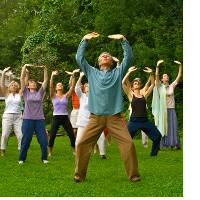 Harmony of Yin — Yang) are, as you have probably noticed, usually more abstract than practical as they are typically applied to philosophy, medicine, Qigong and Tai Chi. This makes it very obvious that the healing and self-improvement systems, Tai Chi and Qigong, are far more than just body improvement exercises. They are, rather, multidimensional meditations toward enlightened living which include health and peak performance as a desirable side effects. The Three (San Bao — Three Treasures) is a comprehensive and systematic framework that is very useful in discussing Qigong and Tai Chi.
Harmony of Yin — Yang) are, as you have probably noticed, usually more abstract than practical as they are typically applied to philosophy, medicine, Qigong and Tai Chi. This makes it very obvious that the healing and self-improvement systems, Tai Chi and Qigong, are far more than just body improvement exercises. They are, rather, multidimensional meditations toward enlightened living which include health and peak performance as a desirable side effects. The Three (San Bao — Three Treasures) is a comprehensive and systematic framework that is very useful in discussing Qigong and Tai Chi.
Wuji – One is cosmic unity, Taiji – two is the cosmic duality – the mutual interplay of opposites. San Bao includes life. It is the point in the nature of things where life arises and we – the humans – become a part of the map of things. It may be easiest, in the beginning, to think of the Three Treasures as Body, Mind, and Spirit, but as you will see the Three Treasures system is much, much more and provides a powerful and systematic way of understanding your personal progress, your place in the universe and your Qi cultivation plus the overall framework of Qigong/Tai Chi.
Laozi declares, “Dao gives birth to the boundless, eternal One.” All beings and things, also known as the Ten Thousand Things, have their Origin in the One, but they are birthed by the Three. This is significant. The Ten Thousand Things are all of the complexities of life from the multiple components of your body to the list of things you think you should do or would like to do. Your health is one of the Ten Thousand Things along with your state of mind. The implication is that by managing your relationship with the One, the Two, and the Three through the practice of Qi cultivation, the Ten Thousand Things will be most favorably arranged. If we attend to (guard) the One, balance Yin and Yang and mindfully cultivate San Bao — Body, Mind and Spirit (Jing, Qi, Shen), the promise is that we will have more health, more power, more wisdom, more peace.
You will find that there are numerous systems of correspondences that are frequently used in the realms of Chinese medicine and philosophy as well: the Four Seasons, the Five Elements, the Six Levels and the Eight Principles and the Ba Gua. In Qigong, especially of the highest order, the Three Treasures system provides a master key to insight that is very deep and profound. Using the system of correspondences of the Three Treasures provides the foundation of Integral Qigong and the system of the Ten Phases of Cultivation and Mastery. And, like the Yin — Yang system (the Two) that we have just reviewed, the Three Treasures will continue to teach you subtle lessons and provide you with countless revelations through your practice in the future.
Three Treasures Correspondences
The list of the San Bao — Three Treasures – correspondences below is not conclusive. It is intended to give a feel for the Three Treasures paradigm, the San Bao medical-spiritual system. It provides a reference that you can return to occasionally to deepen your exploration or confirm insights that arise through your practice. In a typical text on Qigong in traditional China this list could be twice as long, reflecting that the Three Treasures Correspondences penetrate into all aspects of life. Over time instead of finding new ideas on this list you will find yourself adding to it. As noted earlier, the Three Treasures are not something that you must learn or understand. Like, Qi, Yin-Yang and The One, they are always present and dynamic as resources. Your practice plus your intention will uncover them, exactly like uncovering treasures.
In Qigong we gather, circulate and cultivate resources to optimize, strengthen and empower the Treasure of the Body/Jing. To do so it is important to get optimal nutrition, clear water and rest, and conserve Jing. Jing is the sperm and semen in men and the ovum in women, along with the subtlest biological factors including DNA, hormones, neurotransmitters and enzymes. Protecting Jing requires that we limit the negative effects of stress and accelerate restoration. Qigong is the perfect tool.
To strengthen and empower the HeartMind/Qi Treasure cultivate the capacity to say “yes” to what gives us joy and improves our vitality and “no” to the things that overwhelm and drain our vitality. To allow the Qi of Heaven and Earth to merge in the HeartMind Dan Tian, honestly express your emotions to remove tension and resistance from the HeartMind which effects the entire nervous system, all of the Qi channels and most importantly the character.
To strengthen and empower the Heaven Dan Tian accelerate activities that reflect your spirit and cultivate wisdom over time to discontinue the things that sabotage your natural creativity. If this doesn’t exactly make sense, relax and remember that your spirit is the part of yourself that cannot be harmed and never dies – fearless, immortal, eternal. It is your self in its purest state. Explore Natural Flow Qigong (spontaneous remembrance of unity with origin) and the ideas presented earlier in the discussion on Guarding the One.
Heaven Dan Tian is not easy to discuss. Spirit (Shen) is the aspect of yourself that is universal. If this is an area of interest for you, a sense of longing to give greater expression to and make greater space for your Shen Qi will naturally occur over time. Your spirit is already working on this, use the Qigong practices that feel right. Your ultimate self will reveal itself at the perfect pace.
San Bao – Three Treasures Correspondences
| Three Treasures |
Earth Treasure |
Life Treasure |
Heaven Treasure |
| Domains of Being |
Body |
Mind |
Spirit |
| In Chinese Medicine |
Jing |
Qi |
Shen |
| Elixir (Dan) |
Earth Elixir |
HeartMind |
Heaven Elixir |
|
(Jing Dan) |
(Xin Dan) |
(Shen Dan) |
| Elixir Field (Dan Tian) |
Lower Earth |
Middle HeartMind |
Upper Spirit |
|
Dearth Field |
HeartMind Field |
Heaven Field |
| Kind of Qi |
Jing Qi |
Zhen Qi |
Shen Qi |
| Three States |
Yin |
Harmony |
Yang |
| Practice Method |
Kungfu |
Qigong / Taiji |
Alchemy |
|
Calisthenics |
Mind Focus |
Meditation / Stillness |
| Cultivation Intention |
Heal Body |
Clear Mind & Emotions |
Radiate Spirit |
| Lifestyle Focus |
Nutrition, Exercise |
Emotional Resolution & Saying No |
Spiritual Practice, Meditation |
| Nourishment / Fuel |
Food |
Qi |
Spirit |
| 3 Realms of Dao |
Earth |
Life |
Heaven |
| 3 Buddhist Realms |
Earth |
Atmosphere |
Heaven |
| Transformation Symbol |
Caterpillar |
Cocoon |
Butterfly |
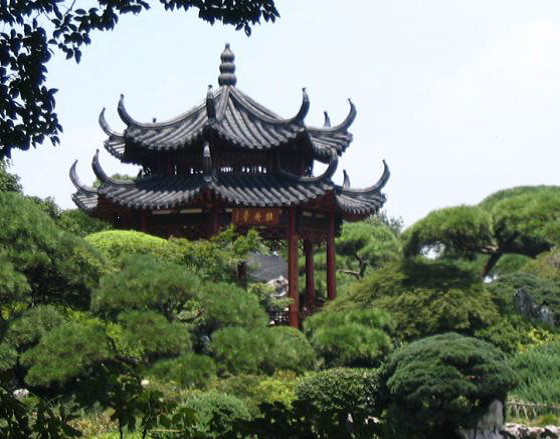
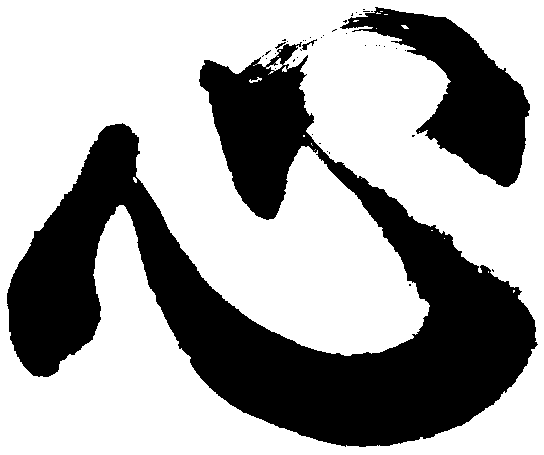
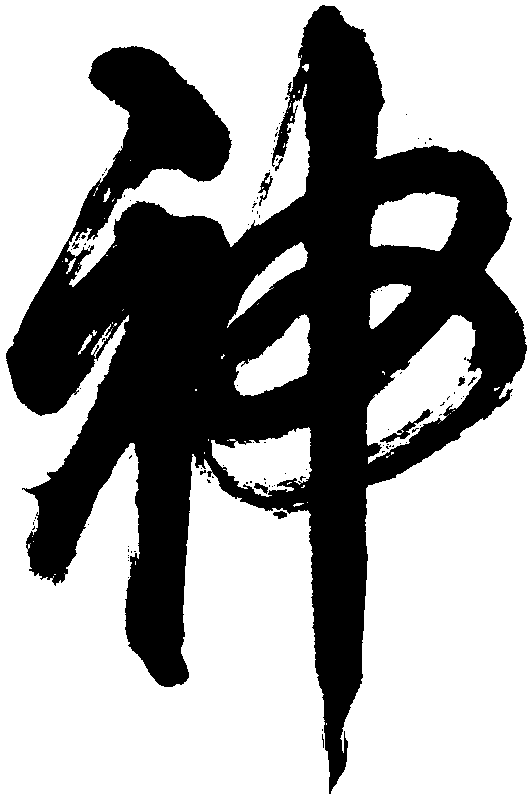
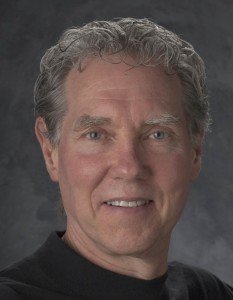
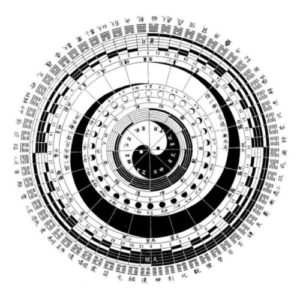








 When it is cold, you can either choose to put on a coat, or be cold and suffer the consequences. You can decide to stay in on extremely windy days or to avoid exposure to bright sun, or you can live with the consequences of exposure to these forces.
When it is cold, you can either choose to put on a coat, or be cold and suffer the consequences. You can decide to stay in on extremely windy days or to avoid exposure to bright sun, or you can live with the consequences of exposure to these forces.

